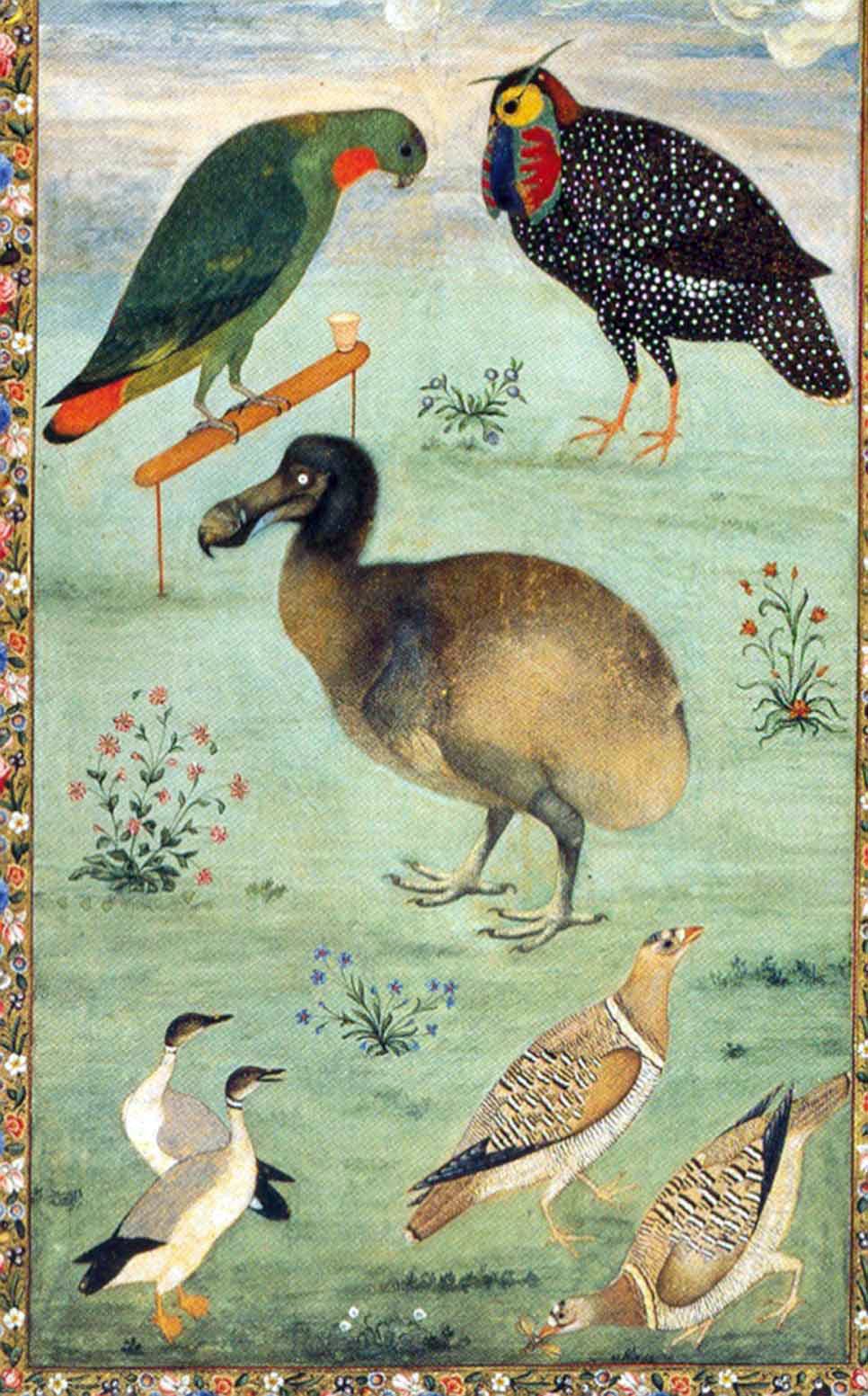Ustad Mansur | Dodo Raphus cucullatus
If you aspire to have a crater on Mercury named after you, those are the rules:
“Deceased artists, musicians, painters, and authors who have made outstanding or fundamental contributions to their field and have been recognized as art historically significant figures for more than 50 years.”
As per 2021 there are 414 records for named craters on Mercury, among them you will find the name of Ustad Mansur - a seventeenth century miniature painter and court artist for Mughal emperor Jahandir.
“This day Abu-l-Hasan, a painter, who bore the title of Nadiru-z-Zaman, drew a picture of my Court, and presented it to me. He had attached it as a frontispiece to the Jahdngir-ndma. As it was well worthy of praise, I loaded him with great favours. He was an elegant painter, and had no match in his time. If the celebrated artists Abd-l-Hai and Bihzad were now alive, they would do him full justice for his exquisite taste in painting. His father, Aka Raza, was always with me while I was a Prince, and his son was born in my household. However, the son is far superior to the father. I gave him a good education, and took care to cultivate his mind from his youth till he became one of the most distinguished men of his age. The portraits furnished by him were beautiful. Mansur is also a master of the art of drawing, and he has the title of Nadiru-l-Asli. In the time of my father and my own, there have been none to compare with these two artists.”
Wakiat-i Jahangiri by Jahangir, Emperor of Hindustan, 1569-1627, published 1875, online at archive.org
And is to Ustad Mansur that we own, in words of Julian Hume, “almost certainly the most accurate and reliable rendition to the Dodo that has survived”. According to Hume, “It was considered a necessary courtesy for emissaries visiting Surat and the palace of the Great Mogul Empire to provide a suitable gift for emperor Jahangir’s menagerie (Ali 1968). At least two Dodos were donated to the collection, and an illustration discovered by Ivanov (1958) has now been attributed to the court artist Ustad Mansur, who depicted one living bird in c.1625”.
The article by Julian Hume “The history of the Dodo Raphus cucullatus and the penguin of Mauritiusis” is a true delight, you can find it at here ; his website is a must see.
A painting depicting the dodo ascribed to Ustad Mansur dated to the period 1628-33. This is one of the few coloured images of the dodo made from a living specimen. Two live specimens were brought to India in the 1600s according to Peter Mundy, and the specimen depicted might have been one of these. Other birds depicted are Loriculus galgulus (upper left) Tragopan melanocephalus(upper right), Anser indicus (lower left) (although the pose and pattern suggests a hybrid, possibly related to the Indian runner duck - note upright posture, long neck and smaller size although this is clearly not to scale going by the lorikeet) Pterocles indicus (lower right)
Ustad Mansur, Public domain, via Wikimedia Commons
